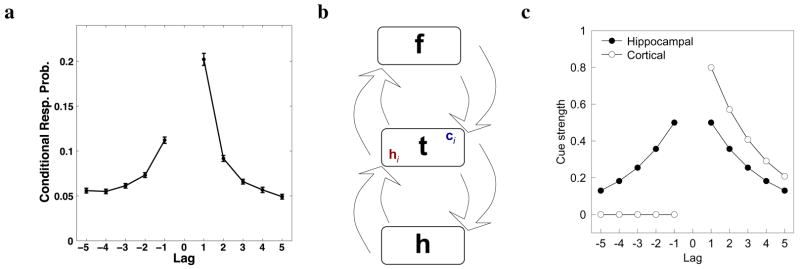Figure 1.
Temporal recovery in episodic memory. a. Temporal contiguity effect in episodic recall. Given that an item from a series has just been recalled, the y-axis gives the probability that the next item recalled came from each serial position relative the just-recalled item. This figure is averaged across a dozen separate studies [11]. b. Visualization of the model. Temporal context vectors ti are hypothesized to reside in extra-hippocampal MTL regions. When an item fi is presented, it evokes two inputs to t—a slowly-changing direct cortical input and a more rapidly varying hippocampal input . When an item is repeated, the hippocampal component retrieves the context in which the item was presented. c. While the cortical component serves as a temporally-asymmetric cue when an item is repeated, the hippocampal component provides a symmetric cue. Combining these in the right proportion enables TCM to describe temporal contiguity effects.

